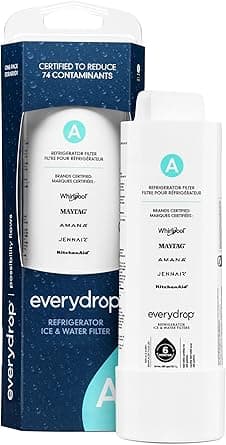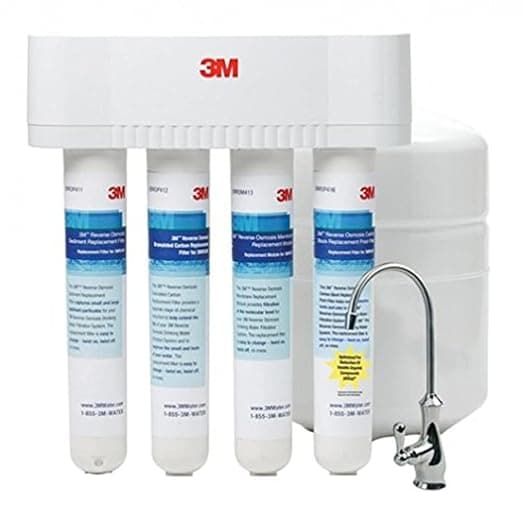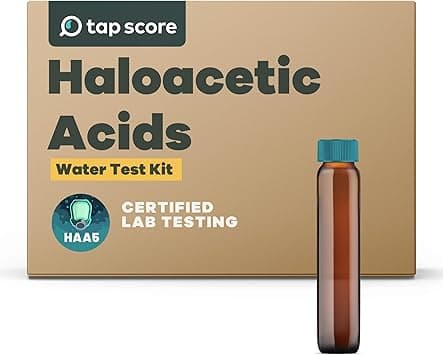St. Paul Tap Water Quality Report
St. Paul's water has 8 contaminants above EPA MCLGs. We recommend using a certified water filter.
Utility
ST. PAUL WATER
People Served
425,300
MCL Violations
0
Last Updated
Oct 1, 2025
Is St. Paul Tap Water Safe to Drink?
St. Paul's water has 8 contaminants above EPA health-based guidelines. We strongly recommend using a certified water filter to reduce exposure to these contaminants. Check our filter recommendations below for NSF-certified options that can remove the specific contaminants found in St. Paul's water.
The data below shows test results from ST. PAUL WATER SYSTEM, which serves 425,300 people in the St. Paul area. Water quality testing is conducted regularly and reported to the EPA. This report was last updated Oct 1, 2025.
St. Paul Water Quality Test Results
Key Water Quality Metrics
Contaminants Detected
⚠️ Contaminants Above EPA MCLG (8)
Lead
What is Lead?
Naturally occurring heavy metal commonly found in tap water
Health Effects
Health protective benchmarks for oral exposure to lead are based on delays in physical or mental development for children and infants, and impacts to the kidneys and high blood pressure for adults. Children are especially susceptible to the effects of lead. Even low levels of lead can damage the brain and nervous system, slow development, and lead to problems with learning, behavior, hearing, and speech. In adults, lead can lead to hypertension, reproductive problems, neurological disorders, decreased kidney function and muscle and joint pain. Exposure to lead can also cause anemia and impact the immune system for both children and adults. The EPA classifies lead as a probable human carcinogen.
Affected Organs
Common Sources
Bromodichloromethane
What is Bromodichloromethane?
Member of trihalomethanes (THMs) that form in water treated with chlorine
Health Effects
Health protective benchmarks for BDCM are based on carcinogenicity and liver toxicity observed in animal studies. The EPA has classified BDCM as a probable human carcinogen. Results from animal studies also suggest that kidney, immune system, spleen, and developmental toxicity are associated with exposure to BDCM. BDCM has been shown to produce DNA changes (genotoxicity) in laboratory studies.
Affected Organs
Common Sources
Dichloroacetic Acid (DCA)
What is Dichloroacetic Acid (DCA)?
Member of haloacetic acids (HAAs) that form as byproducts when chlorine reacts with organic matter
Health Effects
Health protective benchmarks for DCA are based on evidence of increased cancer risk and liver toxicity observed in animal studies. Adverse effects to the male reproductive system have also been associated with elevated levels of DCA in animal studies. The EPA classifies DCA as a likely human carcinogen.
Affected Organs
Common Sources
Chlorine (Total)
What is Chlorine (Total)?
Chlorine is a chemical element with the symbol Cl and atomic number 17. It is a yellow-green gas at room temperature and is a strong oxidizing agent. Chlorine is commonly used in water treatment to kill bacteria and other pathogens, making water safe for drinking.
Health Effects
Exposure to chlorine can cause respiratory issues, skin irritation, and eye irritation. Ingesting high levels of chlorine can lead to gastrointestinal distress and other serious health problems.
Affected Organs
Common Sources
Chloroform
What is Chloroform?
Member of trihalomethanes (THMs) that form in water treated with chlorine and is generally the most abundant THM formed in drinking water
Health Effects
Health protective benchmarks for chloroform have been developed based on kidney and liver carcinogenicity observed in animal studies, and liver toxicity observed in occupational studies. The EPA classifies chloroform as a probable human carcinogen based on animal evidence, and there is additional epidemiological evidence that may increase the risk of colon and bladder cancer in humans. Results from animal studies also suggest that exposure to chloroform can cause liver, developmental and immune toxicity. Acute exposure to low levels of chloroform will cause nervous system toxicity.
Affected Organs
Common Sources
Total THMs
What is Total THMs?
Group of contaminants that form in drinking water systems when a disinfectant, typically chlorine, reacts with organic matter
Health Effects
Drinking water standards for total THMs are based on evidence of carcinogenicity in human and animal studies, as well as liver and kidney toxicity observed in animal studies. Individual THMs have been further associated with developmental, immune, spleen, and genotoxicity.
Affected Organs
Common Sources
Trichloroacetic Acid (TCA)
What is Trichloroacetic Acid (TCA)?
Member of haloacetic acids (HAAs) that form as byproducts when chlorine reacts with organic matter
Health Effects
Health protective benchmarks for TCA in drinking water have been developed based on liver toxicity and carcinogenicity observed in animal studies. EPA has classified TCA as a possible human carcinogen. Developmental toxicity has also been associated with exposure to TCA based on evidence from animal studies.
Affected Organs
Common Sources
Chromium (VI)
What is Chromium (VI)?
Chromium VI, also known as hexavalent chromium, is a toxic form of the element chromium. It is a known carcinogen and can cause various health issues when ingested or inhaled. Chromium VI is often used in industrial processes, such as chrome plating, leather tanning, and wood preservation.
Health Effects
Exposure to chromium VI can lead to serious health problems, including lung cancer, respiratory issues, skin irritation, and damage to the liver and kidneys. Long-term exposure can also affect the immune system and lead to reproductive issues.
Affected Organs
Common Sources
Understanding the Data
This data comes from your local water utility testing. The bar charts compare detected levels against EPA's Maximum Contaminant Level Goal (MCLG). Contaminants above the MCLG are shown by default and may require filtration. All other tested contaminants are within safe levels and can be viewed by expanding the section above.
Recommended Water Filters for St. Paul
Based on St. Paul's water quality data, these NSF-certified filters are recommended to remove contaminants above EPA MCLGs.

Whirlpool Corporation
W11256135
NSF Certified:
Capacity
1001 gal
Filter Life
3 mo
Flow Rate
0.7 gpm
Removes 19 contaminants:
1,2 Dichlorobenzene, 1,4 Dichlorobenzene, 2,4-D, Asbestos, Atrazine +14 more

Whirlpool Corporation
W11569861
NSF Certified:
Capacity
1001 gal
Filter Life
3 mo
Flow Rate
0.52 gpm
Removes 22 contaminants:
1,2 Dichlorobenzene, 1,2,4 Trichlorobenzene, 1,4 Dichlorobenzene, 2,4-D, Asbestos +17 more

Pentair Residential Filtration, LLC
Everpure Residential H-300-NXT
NSF Certified:
Capacity
3001 gal
Filter Life
10 mo
Flow Rate
0.5 gpm
Removes 5 contaminants:
Chlorine (Free), Chlorine (Total), Chlorine Dioxide, Cryptosporidium, Lead

Solventum Purification Inc.
3MRO401
NSF Certified:
Daily Production
11.48 gpd
Removes 15 contaminants:
Arsenic, Barium, Cadmium, Chromium (Total), Chromium (VI) +10 more
Verify Your Water Quality with Independent Testing
With 8 contaminants above EPA health guidelines, independent laboratory testing provides a second opinion and can track changes over time.

SimpleLab
Advanced Home Water Test
$369
Most comprehensive home water test including all standard tests plus additional parameters for ultimate peace of mind.

SimpleLab
Standard Home Water Test
$232
Comprehensive water analysis testing over 200 contaminants including bacteria, heavy metals, and chemical compounds.

Tap Score
Haloacetic Acids (HAA9) Test
$275
Tests for disinfection byproducts formed when chlorine reacts with organic matter in water treatment.
Frequently Asked Questions About St. Paul Tap Water
St. Paul's water has 8 contaminants above EPA MCLGs. We strongly recommend using a certified water filter to reduce exposure to these contaminants. Check our filter recommendations below for NSF-certified options that can remove the specific contaminants found in St. Paul's water.